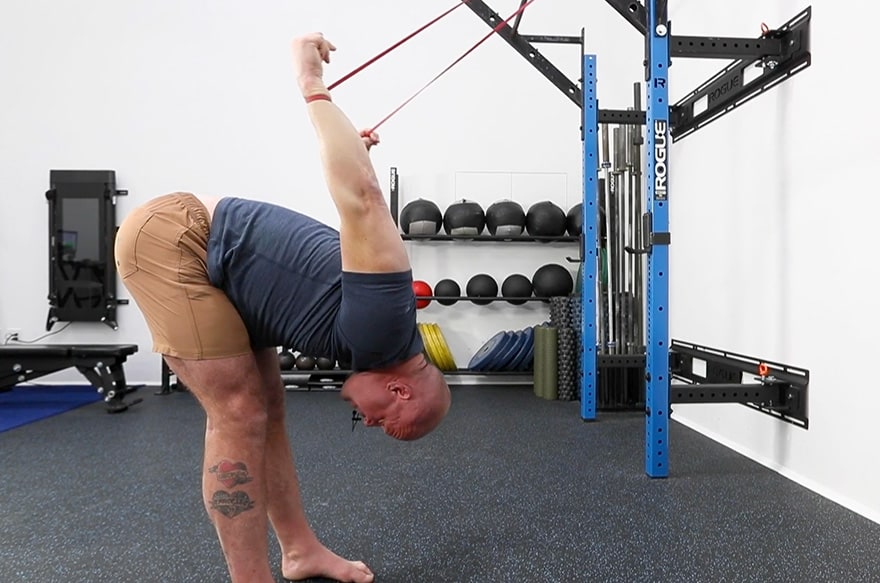How To Relieve Shoulder Pain: Effective Ways to Prevent and Treat It
Hey champions. We’re about to embark on an adventure of understanding, remediation, and prevention. And the focus is on our common adversary:shoulder pain.
If you’re an athlete, I’m willing to bet at some point, your shoulders have hurt. If you’re not, you could still be experiencing this pesky form of pain.
Shoulder pain marks one of the most common types of overuse injuries. But if your shoulder pain has become chronic, made itself at home, it’s high time we sent it packing.
Let’s dive into the mechanics of shoulder pain. Better yet, let’s examine proven ways to relieve and prevent it.
What Causes Shoulder Pain
Our bodies are a marvel of intricate engineering. Our shoulders, for instance, strike a balance between mobility and stability. Too much weight on one side, and shoulder pain takes hold like a vice.
Your shoulder is a triumph of evolution. It’s arguably one of the most complex musculoskeletal structures in existence.
This ball joint is capable of remarkable feats. All while bearing a load one moment and hurling stones or spears the next. This dexterity allows us to thrive, but it also exposes us to vulnerabilities.
Shoulders are resilient but prone to several potential complications. The reasons shoulder pain can manifest are varied and complex, often going beyond the simple overuse of the shoulder muscles itself.
Let’s break it down.
1. Poor Posture
Our modern lives often involve long hours hunched over computers, steering wheels, or smartphones. This habitual forward rounding of the shoulders shortens the chest muscles and weakens the upper back muscles and can result in unnatural positioning of the shoulder joint, causing undue stress and pain.
2. Sedentary Lifestyles & Improper Training Regimens
What does a sedentary lifestyle and rigorous physical activity have in common? Without proper training and warm-up for the latter, both can take a toll on your shoulders. If the muscles around the shoulder joint – particularly the rotator cuff muscles – aren’t strong or flexible enough, complications can arise inside the shoulder joint.
3. Thoracic Spine or Hip Complications
Our bodies operate as a cohesive unit. Therefore, a problem elsewhere can subtly influence your shoulder function.
For instance, a stiff thoracic spine (the part connected to your ribs) can limit your ability to fully lift your arms overhead. This forces your shoulder joints into potentially injurious positions. Similarly, issues with your hips can alter your body mechanics, leading to a compensatory overuse of your shoulders.
Even your gait and walk can influence your shoulder position.
Lastly, our shoulders, as wondrous as they are, can be undone by advancing age and repetitive stress.
Remember, shoulder health isn’t an isolated goal—it’s a part of our body’s interconnected harmony. As such, an issue in one region can quietly contribute to the storm of shoulder discomfort.
This complexity is a testament to the incredible design of our bodies. But it’s also a reminder of the responsibility we have to understand and care for them.
Techniques to Ease Shoulder Pain:
So how do we douse this flame? At The Ready State, we endorse a harmonious dance of techniques. A symphony that silences the cacophony of pain. Here’s how to alleviate shoulder pain.
Self-Myofascial Release (SMR)
Self-myofascial release or SMR is a technical name for what I often call “tissue mashing.” It’s a heart-to-heart with your muscles, facilitated by a foam roller or lacrosse ball. It enables you to address muscle tension, untangle knots, and soothe aching shoulders.
You can think of SMR techniques as a pain pill for your tissues. Ungluing your tissues restores sliding surface mechanics. By decongesting them, you allow new blood to flow back in, reducing soreness.
Our first priority when it comes to pain is to lower that signal and find relief through shoulder exercises.
Perform 5 to 10 minutes of the following stretch exercises to relieve pain.
Restoring Positions of Function
The next step for relieving pain is to restore positions of function. We’ve categorized a number of archetypes for each position of movement that we use to position the body for resilience.
Dysfunction is often caused by moving with a compromised position, and restoring positions of optimacy is a key way to resolve pain.
With the shoulders, poor positioning often looks like the shoulder joint being forward from a stable position. Rounding forward, scrunching forward, whatever you want to call it.
Ideally, the head of your shoulder should sit above your spine like a golf ball on a golf tee, perfectly vertical over your hips and ankles.
Your shoulder should also be relaxed away from your ears, not tense and pulled up by tense trapezius muscles. You need to move your shoulders down.
The following mobilizations should be done 5 to 10 minutes a day to restore position.
Some of these mobilizations require a The Ready State resistance stretch band or similar style band.
Pain Prevention Techniques
Why simply cure when we can prevent it? Let’s look at how we can stop shoulder pain in its tracks.
1. Sit Less
Shoulders rounding forward is bad news if you’re trying to avoid pain. Desk or phone, a lot of us are slouched over in this exact position for hours. So break it up.
Research by Dr. Joan Vernikos of NASA shows that sitting all day is terrible for your health. It leads to effects such as higher blood pressure and lower bone density. But all you have to do to stop it is get up every 30 minutes, even if you sit right back down.
We think similarly about mobility. If you work a job, or have a phone, you’re gonna slouch.
But can you break up that slouching with movement and positional variance? Oh you betcha.
Start getting up every half hour and doing strengthening exercises, such as 5 pushups or squats. Start using a standing desk and sitting on the floor (which I highly detail in this article here.)
The point is, break up those long periods of sitting and become conscious of your slouch.
2. Move More
The other side of breaking it up is to move more. Are you getting your steps in?
Movement increases circulation and lymphatic flow as well as breaking up stagnation. These are good things for avoiding pain and maintaining good movement archetypes.
I hereby invite you to aim for 10,000 steps a day. Be it in the form of a 20 minute walk at the end of the day, or becoming your office’s most prolific bathroom break-er.
A big reason we develop pain is simply that we don’t walk around enough. Deep dive into the science in my other article all about the benefits of walking.
How to Help Shoulder Pain
This exploration of shoulder pain has taken us on a journey. We’ve started with the intricate mechanics of one of our body’s most sophisticated structures. Then, we’ve identified the reasons related to shoulder pain. These are poor posture, sedentary lifestyles, improper training regimens, and even underlying problems with the thoracic spine or hips.
Importantly, we’ve learned that pain relief doesn’t solely rely on quick fixes. Rather a combination of thoughtful self-myofascial release techniques and restoring positions of function. Together, these techniques can help address muscle tension, restore the body’s natural alignment, and offer immediate relief for pain symptoms.
Prevention is equally crucial as we navigate our path to better shoulder health. We can reduce the likelihood of developing chronic shoulder pain by breaking up long periods of sitting, moving regularly, and being conscious of our posture.
With these strategies, we hope you’re better equipped to restore your range of motion and prevent shoulder problems. Embrace the interconnected harmony of our bodies, and foster a better, pain-free Ready State.




















TRS Virtual Mobility Coach
Guided mobilization videos customized for your body and lifestyle.
FREE 7-Day Trial